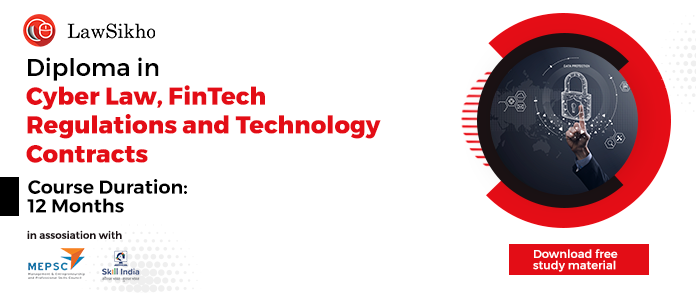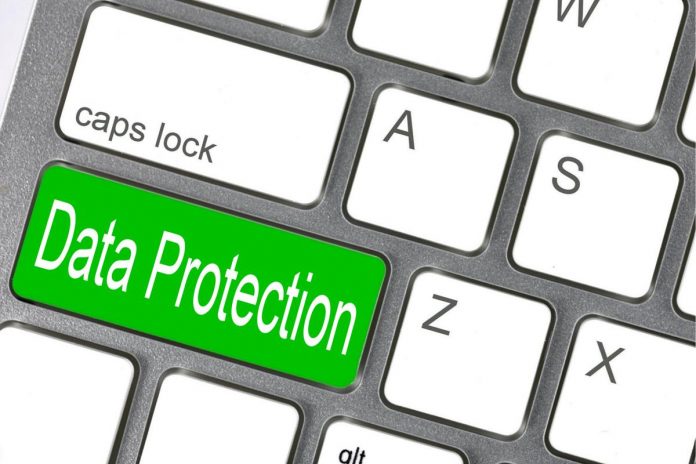This article has been written by Anusha Nethala, pursuing an Executive Certificate Course in US Accounting and Bookkeeping from LawSikho.
It has been published by Rachit Garg.
Table of Contents
Introduction
In today’s digital world, keeping our data safe and maintaining our privacy have become top priorities. As technology advances, we encounter both challenges and opportunities when it comes to protecting our information. With interconnected systems and the Always-present risk of cyber threats, data security is more tested than ever. So, fasten your safety belt as we dive into the interesting world of data security and privacy! In this article, we will explore the hurdles we face and the exciting possibilities that technology brings to bolster our digital protection and safeguard our privacy.
Technology’s opportunities and challenges for data privacy and security
Nowadays, in the digital world, keeping our data safe and protecting our privacy have become major concerns. In this article, we will investigate some of the basic difficulties and hopeful possibilities that surface from the use of technology in this area. Technology plays a major role in finding sensitive information, but it also brings challenges and opportunities regarding privacy and data security.
Challenges
Cyber threats and attacks
As technology pushes on, so do the smart tricks used by black hats to break into systems and access data illegally. Organizations must invest in good cybersecurity gadgets like firewalls and regular security checks to protect their valuable data from hackers. These attacks happen more often as we grow up. The challenge lies in staying one step ahead by using robust security computing and keeping up with new threats.
Data breaches
Data breaches have become more common and have major outcomes for individuals and organisations. When data is split, it can be traded on the dark web, mainly for identity theft, financial fraud, and damage to status. By implementing strong security, organizations can greatly decrease the chances of successful attacks and protect sensitive information. Reducing the risk of data breaches requires having comprehensive security protocols and converting sensitive data.
Privacy concerns
With the widespread use of technology, personal data is collected and stored on a large scale. This raises concerns worldwide about privacy and how personal information is used. Finding a balance between using data for innovation and respecting privacy rights is a very big challenge. To address these, organizations need to be crystal clear about how they collect data, obtain permission from individuals, and give people control over their data. Regulations like the European Union’s General Data Protection Regulation (GDPR) have been created to protect isolation rights and require responsible data handling.
Insider threats
While we often focus on outside threats, insiders can also pose a serious risk to data security. By promoting a culture of security awareness and making employees aware of their duty, organisations can underpin their protection against internal neglect. Employees or authorized individuals who have access to sensitive information can waste it or accidentally expose it, leading to breaches. To reduce the risk of insider threats, organisations must have strict access controls, use scan systems, and provide ongoing employee training.
Evolving regulatory landscape
The rules and regulations related to privacy and data security are constantly changing. New laws are introduced to address the changing technological outlook and protect human rights. Cutting across the complex and different requirements across different places adds a turn to data security and privacy efforts. Anyhow, keeping up with these regulations and making sure agreements are compliant can be challenging for organisations that must stay updated on the latest regulations, conduct privacy impact ratings, and have solid plans in place to meet the legal task.
Data interoperability and sharing
Partnerships and the need to share data between different organisations bring the challenge of ensuring secure data sharing. Setting up secure protocols for data sharing and using technologies that allow controlled and secure access to data across different systems and platforms is testing. Standardising data formats, using encryption, and integrating secure interfaces can enable secure data sharing without compromising privacy. Organisations may need to exchange sensitive information while maintaining privacy.
Opportunities
Advanced encryption techniques
Technology offers advanced encoding techniques that can protect data when it’s stored or transmitted. Encoding algorithms, like the Advanced Encryption Standard (AES), provide very strong protection against unapproved access. Further research and development in encoding technologies can increase data security and privacy. Organisations should adopt encoding as a standard action to protect sensitive data and invest in developing even stronger encoding techniques.

Artificial Intelligence and machine learning
Artificial Intelligence (AI) and Machine Learning (ML) have great potential to improve data security. These technologies can scan large amounts of data, detect anomalies, and identify potential security breaches in real-time. AI and ML can also perform robotic security processes, reducing the chance of human error. Implementing AI-powered threat clearing systems and using ML algorithms for pattern recognition can strengthen data security by identifying and reducing threats.
Blockchain technology
Blockchain, the blockchain behind Bitcoin, offers secure data storage and transaction opportunities. Its decentralized and tamper-resistant nature makes it attractive for maintaining reliable records and increasing data security. Blockchain has the potential to revolutionize industries such as finance, healthcare, and supply chain management by improving data integrity and clarity. Institutions should explore the use of blockchain for secure data management and consider its implementation to boost data security and privacy.
Privacy-enhancing technologies
Technological advancements also bring innovative solutions for increased privacy. Techniques like differential privacy, homomorphic encryption, and secure multi-party computation allow data analysis while protecting individual privacy. Organisations should invest in the research and development of privacy-upgrade hardware and integrate it into their data processing and analysis practices. These technologies enable organisations to gain awareness from data without compromising sensitive information.
Enhanced security awareness and education
With increased awareness of data security and isolation examination, there is an opportunity to educate humans and institutions about best practices. Technology can be used to deliver workshops, training programs, and resources to promote a culture of security awareness. Organizations should conduct regular cybersecurity training programs, raise awareness about common security threats, and promote a security-alert mindset among their employees. Educating people about cybersecurity is a remarkable contribution to data protection efforts.
Collaboration and industry standards
Collaboration among industry stakeholders is important to effectively address data security and privacy challenges. Industry alliances and partnerships can play a crucial role in driving innovation, fostering cooperation, and establishing guidelines for secure data practices. Sharing best practices, partnering on threat intelligence, and demonstrating industry standards can help organizations stay ahead of evolving threats. Institutions should actively participate in industry cooperation to leverage collective knowledge and further secure human data.
Some additional points for data security and privacy
Secure remote work
The switch to remote work has introduced new challenges for privacy and data security. Organizations need to implement secure remote access solutions, such as virtual private networks (VPNs) and multi-factor authentication, to ensure that data remains protected even in remote work environments. Employees working from home or other remote locations may access sensitive data from personal devices or unsecured networks, increasing the risk of data breaches.
Third-party risk management
Many organizations rely on third-party sellers and service providers to handle their data. Organizations must exercise thorough due diligence when selecting sellers, assess their security practices, and set up clear contractual agreements regarding data security and privacy. Regular checks and monitoring of third-party activities are trying to mitigate the risk of data breaches or unapproved access. However, outsourcing data management introduces future security risks.
Data lifecycle management
Successful data security and privacy measures should cover the entire data lifecycle, from collection to distraction. Implementing data minimisation practices, where only important data is collected and kept back, decreases the risk associated with storing unwanted sensitive information. Organizations must define data retention policies, encode data both in transport and at rest, and securely dispose of data when it’s no longer required.
Regular data backups
Verify the honesty of backups regularly and ensure they are securely stored in off-site or cloud-based Areas. Maintain regular data backups to reduce the impact of data breaches, system failures, or natural failures.
User access controls
Granting appropriate access benefits to users is necessary for maintaining data security and privacy. Daily reviewing and updating user access permissions, damaging unused accounts, and carrying out strong password policies are important measures to prevent uncertified access to sensitive data. Perform role-based access controls (RBAC) to confirm that employees have access only to the data required for their roles.
Conclusion
The challenges and good times associated with technology for data security and privacy are closely linked. While technology has created new threats and risks, it also provides modern solutions. By taking an effective approach, staying informed about emerging technologies, and implementing strong security measures, we can ensure the robust protection of data and privacy in our increasingly digital world. As technology continues to advance, it is important for humans, organizations, and policymakers to work together to address the challenges and make the most of the opportunities.
References
- Blockchain in Wireless Communications and Computing: Security Threats and Applications | Hindawi
- Free Online Cyber Security Awareness Course | Alison
Students of Lawsikho courses regularly produce writing assignments and work on practical exercises as a part of their coursework and develop themselves in real-life practical skills.
LawSikho has created a telegram group for exchanging legal knowledge, referrals, and various opportunities. You can click on this link and join:
Follow us on Instagram and subscribe to our YouTube channel for more amazing legal content.










